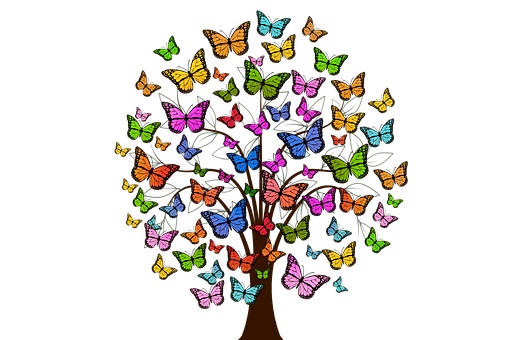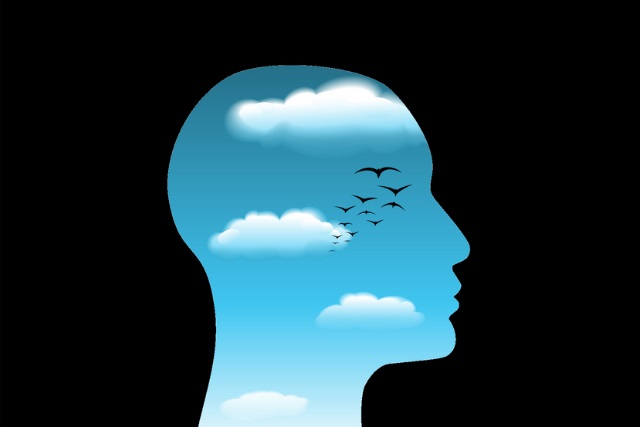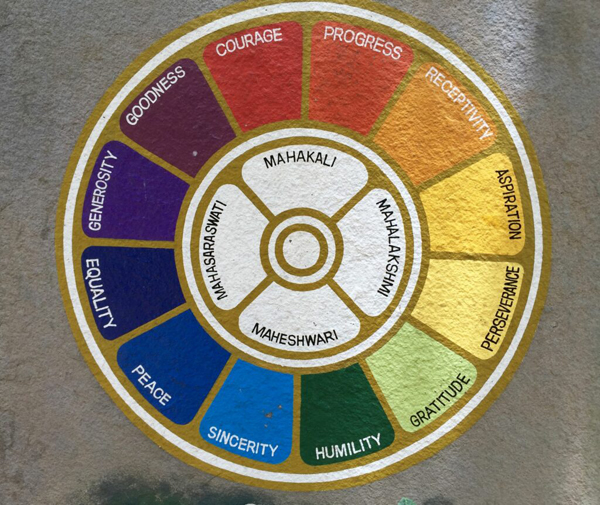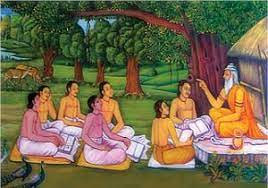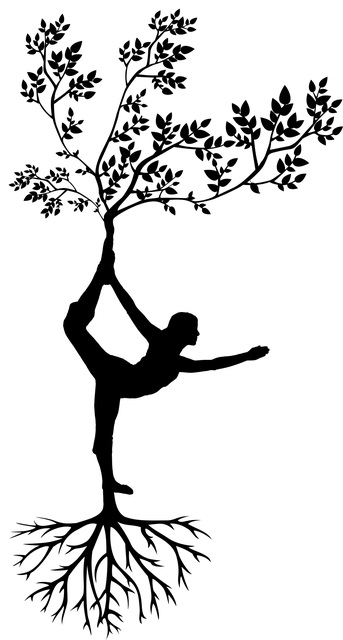Consciousness and health
The four pillars of well-being — an integral approach
Abstract
Well-being is an innate need that brings vitality and makes life worthwhile. It provides an overall sense of contentment, harmony, balance and fulfilment between the inner and outer being. Well-being is all about unblocking and restoring the natural flow. It requires an integral and holistic engagement across the physical, mental, vital and spiritual levels, individually and collectively. It calls for investing with sincere intentions, persistence, practising self-regulation with regularity. This article provides a framework, AVVA, consisting of four pillars adapted from our scriptures. These are āhāra (consumptions), vihāra (associations and lifestyle), vicāra (guiding principles), ācāra (behaviour patterns, conduct and relationship with the self and others). The framework provides a lens to better understand the drivers, effects and impact of these four pillars and also the interconnections that exists between them. It can also serve as a reference-point for individuals or collectives for reflection, taking stock, recalibrating and renewal, based on their current state, their commitment and their goal.
Introduction
It is an understood and undeniable reality that individuals and collectives seek balance, harmony and happiness at the core. Well-being is an innate need that brings vitality, makes life worthwhile and provides purpose.
Whatever may be the path chosen towards seeking personal or collective well-being, the aim is to bring equilibrium. Contradictory as it may appear; even the manifestation of a conflict is usually with the purpose of restoring a state of wellness. The current pandemic is an example of an imbalance in the individual and collective state of well-being. It is time then that we understand well-being to mainstream it.
Defining well-being
It is indeed difficult to objectively define well-being. This is because firstly it is a subjective state, an experience. It provides an indication of the overall sense of happiness, cheerfulness, satisfaction, fulfilment and equilibrium in the inner being and outer becoming. It is a positive concept that enables the expansion of personal capacity and helps to optimally leverage resources.
Secondly, the experience of well-being cannot be broken down into different elements of mental, vital, physical or spiritual. It is a sum total of all these that provide a complete, integral experience. Fixing one or a few elements will not provide a wholesome experience. Therefore, it requires a whole and full engagement.
Thirdly, its absence is more acutely felt while its presence is taken for granted. Not being in a state of well-being is not necessarily indicative of a physical, vital, mental or spiritual infirmity but implies a (dis) ease in the integral health that blocks the ease-ness and flow in everyday engagements.
What then entails well-being?
It includes having good overall health, high life-satisfaction, a sense of meaning or purpose and ability to manage stressful situations. It provides an overall sense of contentment, harmony, balance and fulfilment between the inner and outer being.
What might be everyday examples of well-being?
We can all relate to the presence of warmth all over the body, a lightness of feeling, a good appetite and digestion, sound and restful sleep, clarity and perfect coordination of the mind and ability of the body for physical exertion, vitality and energy in the physical, mental, vital self.
The Mother has very simply captured the essence of well-being as, “It’s not money that makes a man happy, but rather an inner balance of energy, good health and good feelings (1).”
We all have experienced such states periodically. All of us have the ability to experience and be in a state of well-being. The struggle is in holding this state within constantly. Due to the stresses and anxieties in our life-situations, we experience an imbalance. And we are continuously striving for different ways to restore our well-being.
Underpinnings of well-being
Nature
This deals with the ‘inner’ balance and equilibrium. The manifestation is in the ‘outer’ workings. The absence calls for certain actions (working) towards restoration, renewal.
Process of restoration and renewal
It requires a holistic and integral approach (physical, mental, vital and spiritual). The work involves aligning from inside to outside. This means it is centred in the environment within and not necessarily driven by the external environment.
The outcome
An enhanced quality of life-experience. This inner — outer alignment manifests as a groundswell of inner joy, harmony and a feeling of ‘all is well, all will be well’. While the outer world and reality may continue to be VUCA (volatile, uncertain, complex and ambiguous), the response to the challenges and the experience of it will not derail the individual or collective significantly. Integral well-being also helps build agility and inner resilience to deal with seemingly adverse circumstances in an informed and right manner.
Framework
The following framework that has been adapted from Indian scriptures. The framework provides the basis that can help individuals and collectives better understand the drivers, effects and impact of the four pillars of well-being and also the interconnections that exists between them.
AVVA: the four pillars of well-being
| āhāra | Our intake and consumption It encompasses all our consumption patterns. This includes all that we eat, see, hear, sense, smell. It is a source of receiving from the external world all that we need for managing and navigating everyday living. |
| vihāra | Our associations and lifestyle choices It includes the people who form our world of interaction and relationships, our routines, habits, occupations, social engagements, entertainment, hobbies and interests, intellectual, physical pursuits, networks, support groups, etc. |
| vicāra | Our guiding principles The values, ideals, beliefs, thought-processes that define our attitude and intentions. It is the quality of mind that determines our world-view. This is directly influenced by aahāra and vihāra. |
| ācāra | Our behaviour patterns and relationship with the self and others How we conduct ourselves, the decisions we take; the way the world experiences us. It covers the entire manifestations of all the three above (aahaara, vihaara, vicaara) into action in everyday living. |
Let us now go deeper into the framework to understand each of the four pillars in detail.
Āhāra
Āhāra is the supporting pillar which helps maintenance and sustenance of life. In Āyurveda, āhāra refers to diet (food). Theoretically, it is the gross food that we partake with our tongue, mouth, throat; all foods that can be chewed, swallowed, sipped or licked. Holistically, āhāra includes everything that is ingested, consumed, received and perceived. It is not limited to just gross food. Āhāra in effect is the ‘information source’ for our body, mind and intellect.
Logically then, āhāra entails the entire breadth of activities that our senses and sense organs engage in to receive and perceive from the world outside. Therefore, going beyond gross food, it includes all that the eyes see, the ears hear, the sensations experienced by the skin, the variety of tastes received by taste-buds and the smells picked up by the nose.
Each individual is unique with respect to their quality of mind, nature and conditioning. Thus, it is likely that there will be differences between reception and perception and experience between individuals. What is vital to catch on to is whether the quality and quantity of diet (consumption) is causing an imbalance /disturbance within the individual — in the alignment between thoughts, feelings and action.
What should we focus upon?
The primary focus of āhāra is to consume (through our senses) all that which maintains or enhances energy, vitality and boosts inner cheerfulness. āhāra, as pointed out earlier, is the source that ultimately determines the outcome and directly impacts the other three pillars, namely vihāra, vicāra and ācāra.
If we feed on a diet of fear or negativity, our thoughts and actions automatically get directed towards coping/mitigating those real and unreal fears. These in turn could lead to flight, fright or fight reactions, making us choose wrong associations and ultimately leading to us erroneous action-steps. To unhook from this becomes a preoccupation that forms a vicious loop. This is a state that is a far cry from experiencing well-being!
Moderation is an important cornerstone in ensuring the right quantity and quality of our āhāra intake. The following verse from the Bhagvadgītā discusses the importance of moderation that is required for experiencing well-being and enabling peak-performance levels in everyday living.
युक्ताहारविहारस्य युक्तचेष्टस्य कर्मसु |
युक्तस्वप्नावबोधस्य योगो भवति दु:खहा ||6.17||
“Those who are temperate in eating and recreation, balanced in work, and regulated in sleep, can mitigate all sorrows by practising Yoga.”
If the body becomes diseased, it is in violation of the natural law and impedes the practice of Yoga. By being temperate in bodily activities and practising yoga, one can become free from the sorrows of the body and mind.
Conscious and constant vigilance over our intake can keep us on track for timely course correction. The Gītā has also mentioned the positive outcomes that emerge if one is mindful of the quality and quantity of intake.
आयु:सत्त्वबलारोग्यसुखप्रीतिविवर्धना: |
रस्या: स्निग्धा: स्थिरा हृद्या आहारा: सात्त्विकप्रिया: ||17.8||
“Persons in the mode of goodness prefer foods that promote the lifespan, and increase virtue, strength, health, happiness, and satisfaction. Such foods are juicy, succulent, nourishing, and naturally tasteful.”
Foods (all consumption through our senses) in the mode of goodness will promote longevity, bestow good health, virtue, happiness, and satisfaction.
Vihāra
It is often said that, ‘You are only as good as the company you keep’!“The key is to keep company only with people who uplift you, whose presence calls forth your best (2).”
Vihāra provides a window into our associations and lifestyles which in turn influences our everyday living: routines, habits, occupations, social engagements, entertainment, hobbies and interests, intellectual, physical pursuits, our networks, support groups, etc. Our associations influence the quality of our thoughts. They have a large influence on what and how we think.
Edwin Paxton Hood wrote, “Be as careful of the books you read, as the company you keep, for your habits and character will be as much influenced by the former as the latter (3).”
Our choices on lifestyles, the ambience and energy around us are also determined by the associations we maintain. Our scriptures have also talked about this in detail. In essence, the saṅgati (association) determines the quality of satsaṅga (gathering together for Truth). Satsaṅga is an important element to our well-being. Simplistically, Sat means ‘Truth’ and saṅga means, ‘to be associated with’. If the quality of people we engage with inspire and uplift our thoughts and actions, it is likely to influence our thoughts along the same lines. If the company we keep is inclined towards self-gratification, indulgences or is in pursuit of money, fame and power, we are automatically led towards a lifestyle that supports acquiring and possessing. This path is all too familiar and appears easy, comforting and pleasant. It may not however necessarily take us towards what is right and good for our overall long-term well-being. These pursuits basically agitate the mind and breed fear, anxieties, anger, regrets, sorrows, etc. An agitated mind, oscillating between extreme polarities, causes imbalances in our being and becoming. The quality of our satsaṅga determines our locus of control. The answer to seek is, have we mortgaged our well-being to outside forces at the cost of losing inner control and peace?
What should we focus upon?
Clearly it would be to focus on our lifestyle choices and choosing the people we interact with carefully and mindfully. As mentioned earlier, there is a direct correlation to our well-being between a balanced mindset and actions to the quality of associations. The associations with people who uplift and inspire us to rise above will enhance our well-being in the long run.
Vicāra
Our āhāra (consumption patterns) and vihāra (associations) have a direct bearing on our thought-processes and quality of mind. These govern our world-view. Our ideals, values, beliefs are largely determined on what we choose with respect to our intakes and associations. Enough examples exist in our own experiences, current world-happenings, in history or mythology supporting this — a bandit becoming a sage, a militant mercenary following the path of peace, a dishonest industrialist turning philanthropist, an inventor of an atom bomb working to forge world peace!
“It’s all in the mind you know (4)” is a common saying.
The well-spring of our well-being begins and ends in the mind. When the mind is directed by a higher aligned intellect, it remains an instrument that is deployed for our well-being. Disturbances are caused when the mind is allowed to take over and direct our thoughts and actions. Reining in the mind, such that we have the ability to deploy our discretion and discriminatory powers, is an important element that helps in our overall experience of well-being.
We have all experienced that when the mind is still, calm, channelled, we experience peace, harmony, satisfaction. This is true both in an individual personal or collective experience. The moment it gets caught in the dualities of like-dislike, joy-sorrow, pleasure-pain, we have allowed our mind to control us, thus moving into a state of imbalance.
The best example of this is when we see the outstanding performance of a sportsperson, a musician or a dancer. When they are completely in the here and now, with no anxieties of the future or regrets and fears from the past, they operate from their highest potential and in a complete state of flow. As spectators, we wonder at the absolute connect between their thought, feelings and action — their perfection, excellence, effortlessness and seamlessness and their sense of joy at being fully in the moment!
What should we focus upon?
Reining in the mind is easier said than done. However, we have all experienced these wonderful moments and pockets of bliss, joy and alignment. It is also a fact that we yearn for it and are constantly seeking it in different ways. This state of well-being is possible but requires effort. The Gītā mentions this as a tapas (austerity):
मन: प्रसाद: सौम्यत्वं मौनमात्मविनिग्रह: |
भावसंशुद्धिरित्येतत्तपो मानसमुच्यते ||17.16||
“Serenity of thought, gentleness, silence, self-control, and purity of purpose — all these are declared as the austerity of the mind.”
Śrıi Kṛṣṇa in Bhagvadgītā verses 6.5, states how important it is to befriend the mind and mindfully operate from the higher mind in us.
उद्धरेदात्मनात्मानं नात्मानमवसादयेत् |
आत्मैव ह्यात्मनो बन्धुरात्मैव रिपुरात्मन: ||6.5||
“Elevate yourself through the power of your mind, and not degrade yourself, for the mind can be the friend and also the enemy of the self.”
The mind can be considered as a garden, which can either be intelligently nurtured or allowed to run amok. The intent is the first step towards cultivating elevating thoughts which determine our state of experiencing well-being positively. Negative thoughts that perpetuate greed, envy, hatred, resentment will impact our action choices that are likely to be destructive and energy sapping. If the mind concentrates on positive thoughts such as gratitude, compassion, generosity, love, we are easily allowing ourselves to expand and experience the abundance in ourselves and others.
The Mother’s symbol of the twelve attributes — sincerity, humility, gratitude, perseverance, aspiration, receptivity, progress, courage, goodness, generosity, equality and peace — provide the direction for befriending and guiding the mind to work towards ensuring our well-being and also of all the collectives we are part of.
The current reality shows that the world has more numbers lamenting about their struggles to find peace, happiness and balance and only a handful experiencing the wellspring of well-being. That is because befriending the mind and allowing the intellect to consistently guide us requires vigilance, a strong will and consistent effort, along with heaps of faith. It requires regular contemplation, processing and a letting-go of our dysfunctional, default modus operandi patterns.
Ācāra
This is the domain of our expressing ourselves in the world within and outside. It represents our behaviour and actions in our everyday living and our relationship with the self and others. It is the final amalgamation of our thoughts and feelings into action. It is the sum total of what values we have imbibed, the meaning making that we have internalised through the interactions and experiences manifested in our behaviour and actions. In essence, it is the outward manifestation and expression of all that is inside of us.
The question to ask now is, as individuals are we always happy and satisfied when our immediate expectations are met? Are we selfish creatures to the core? Is the experience of joy and sense of fulfilment lasting or transient? Is our sense of well-being and balance likely to increase if the environment around us and all those closely associated with us are also in a similar state?
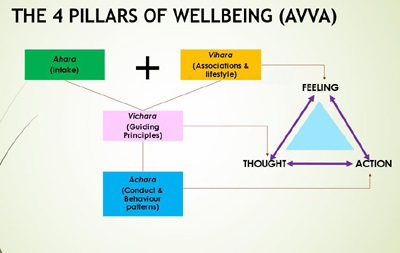
As much as we rationalise otherwise, hostility around us impacts us negatively and good cheer brings a spring and positivity in our inner and outer being. Engaging in activities that are purely for self-gain are likely to cause discords in the eco-systems and do not allow positive well-being experiences to flow deep within. The fact of the matter is that we are happy when people around us are happy. We are all social beings and happiness in isolation is contradictory to human nature. The Tokyo Paralympics 2020, where two friends shared the gold medal for the high jump, rather than going for a tie-breaker, is a beautiful example of this. Not just the two of them, the world itself witnessed this and felt elevated in this experience.
Hugging each other with joy, Tamberi said, “I still can’t believe it happened. Sharing with a friend is even more beautiful. It was just magical’. And Barshim added, ‘For me, coming here, I know for a fact that for the performance I did, I deserve that gold. He did the same thing, so I know he deserved that gold (5).”
When we act for the welfare of others in the eco-system, it adds a zest, purpose, a sense of fulfilment and satisfaction. This indicates that striving for collective well-being enhances our personal well-being state in a manifold way. Sharing and contributing beyond self enables an expansion, unity and abundance which we have all experienced and can relate with.
What should we focus upon?
The key therefore is going beyond the self, beyond the narrative of ‘I, me and mine’. If we are able to direct our mind for the betterment of the world, for the well-being of all the stakeholders (humans, animals and environment), we are in a position of creating a collective positive state of well-being. This orientation is towards loksaṅgraha. This simultaneously benefits the individual and the collective. It helps bring people together and simultaneously integrate one’s own good (ātmakalyaṇa) with the collective welfare (sarvakalyāṇa). The Bhagvadgītā verses 3.20, 3.21, 3.25 clearly elucidate this. If loksaṅgraha becomes the goal, it would without doubt lead towards success and progress individually and collectively. History provides evidence on societies that progressed and thrived on the basis of a mind-set towards collective well-being and sustainability.
Our conditioning is such that consumption is given a premium at the cost of contribution or giving back. The rapid disintegration, breakdown and disorder currently experienced in social systems is testimony of this mind-set. This state is clearly contrary to well-being by every standard!
Shifting the mindset to loksaṅgraha is not an easy endeavour. It is also not possible without a conscious and sincere effort that does not seek short-term gains. It would require simultaneously making well-being of the self and others as the primary driver.
How do we activate this? Sri Aurobindo mentions that to transcend the primary orientation from me and mine, attaching to a higher calling can be a good starting-point. He mentions some of these as, “Patriotism, cosmopolitanism, service of society, collectivism, humanitarianism, ideal of humanity (6).”
Conclusion
The world today is experiencing an imbalance in the collective and individual well-being. The actions of a few have exponentially impacted and tilted the balance and harmony in the entire eco-system. The movement required is for the collectives to consciously invest and take the onus of their well-being. The greater the numbers on the side that experiences a state of peace, happiness and balance, the lesser will be the dissatisfaction and lamentation individually and collectively.
To restore a state of integral well-being requires that AVVA is aligned individually and collectively. Not just once, but consistently. Investing in well-being will settle polarities within and outside and align us to the higher. The effort and the levels of engagement will vary, based on the readiness and preparation of the individual or the collective.
Each individual or collective can deploy the AVVA framework as a reference-point for reflection, taking stock, recalibrating and renewal based on their current state, their commitment and their goal.
To conclude, well-being is all about:
• unblocking and restoring the natural flow;
• restoring or renewing and requires an integral and holistic engagement across the physical, mental, vital and spiritual levels, individually and collectively. A piecemeal approach will only bring limited and short-term benefits;
• accepting and appreciating the interconnectedness of the four pillars (AVVA). An imbalance in any one impacts every other and causes a disruption to the overall state of well-being; and
• investing with sincere intentions, persistence, practising self-regulation with regularity.
The Mother says, “If the whole being could simultaneously advance in its progressive transformation, keeping pace with the inner march of the universe, there would be no illness, there would be no death (7).”
We all need to answer these questions for ourselves — how much does it matter?
Are we ready to sign up for our collective holistic well-being?
References
1. [Online] Available from: https://www.aurobindo.ru/workings/ma/13/vol_13_e.pdf, [Accessed 8th August 2021].
2. Epictetus. The Art of Living: The Classic Manual on Virtue, Happiness, and Effectiveness, A New Interpretation by Sharon Lebell. San Francisco: Harper One; 1994, p. 98.
3. Hood EP. Self-education. 1851. Ulan Press; 2012 (Originally published 1851), p. 65.
4. [Online] Available from: https://quotefancy.com/spike-milligan-quotes [Accessed 1st August 2021].
5. [Online] Available from: https://www.thehindu.com/sport/settled-high-jump-friends-elect-double-gold-over-jump-off/article [Accessed 31st August2021]
6. Roy A (ed). The Message of the Gıitaa as interpreted by Sri Aurobindo. Pondicherry: Sri Aurobindo Ashram Trust; : 3rd Impression 2014, p. 74.
7. The Mother. The Collected Works of the Mother, Volume 3. Cent ed. Pondicherry: Sri Aurobindo Ashram Trust; 1977, p. 90.
Dr. Geeta Kumar is the Founder and Principal Consultant of Pragati: Partners in Progress.
Share with us (Comments,contributions,opinions)
When reproducing this feature, please credit NAMAH,and give the byline. Please send us cuttings.

